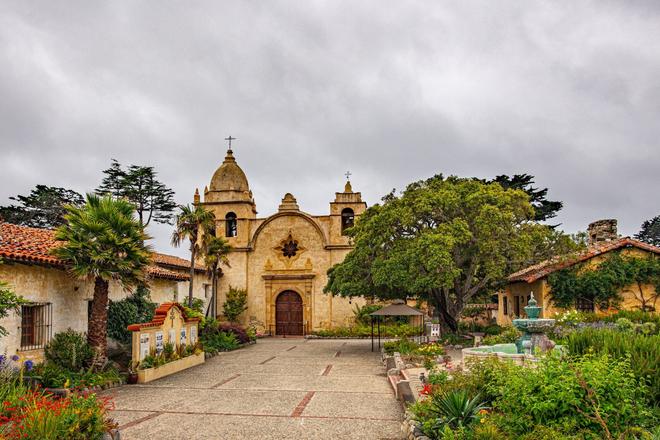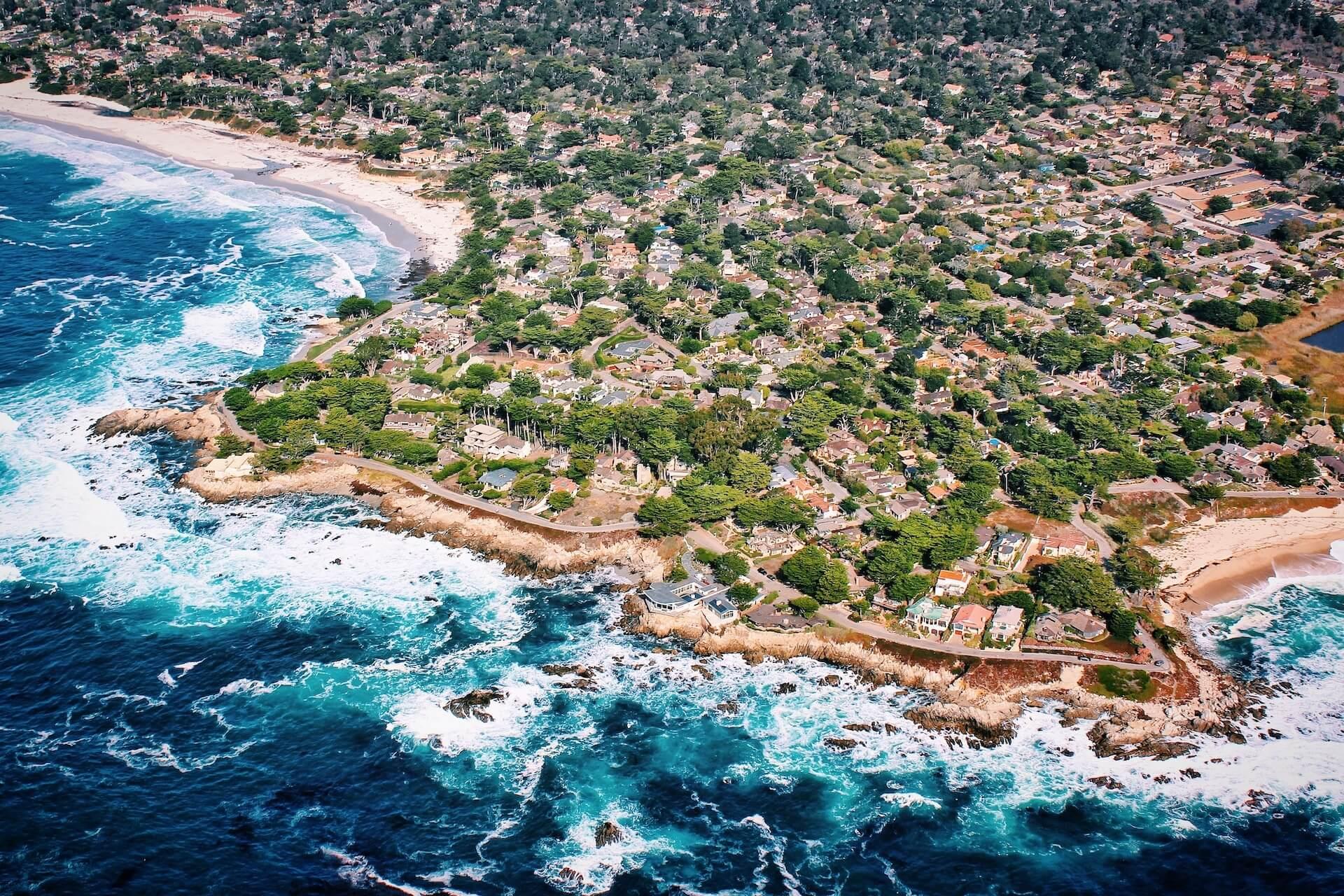There are places in California that you can't miss – world-famous national parks, San Francisco with Alcatraz, Hollywood... And then there are places that the average visitor misses that could offer equally interesting experiences. Carmel-by-the-Sea is one of those places.
Artists on every corner
"This area gets under your skin. There's something about it, a kind of special atmosphere that's much nicer than the San Francisco area where I grew up. It's probably a combination of the beautiful rural nature and the nice people who live here. It makes life a lot easier than in other areas of California." These words were spoken by the famous American actor and director Clint Eastwood, one of the many celebrities who fell for the charm of Carmel-by-the-Sea so much that they settled here years ago and live here. Thanks to Eastwood, Carmel has become known to a wider audience, but it would undoubtedly have received this attention even without the presence of a film legend.
The town benefits from its unique location – on the Pacific coast, on the edge of the wild and beautiful Big Sur region that has long attracted the attention of artists. While the earliest modern settlement dates back to the 18th century (in connection with a local mission), the town itself was not founded until the early 20th century. Virtually immediately, an artists' colony began to form here. This influx of artists was aided by nature. In 1906, San Francisco was hit by a massive earthquake that severely damaged the city, and a number of figures from the local art scene decided to find a quieter retreat for their work. Carmel-by-the-Sea came into their sights, where a house and lot could be purchased for $100 (hardly an imaginable sum when looking at Carmel real estate prices today).
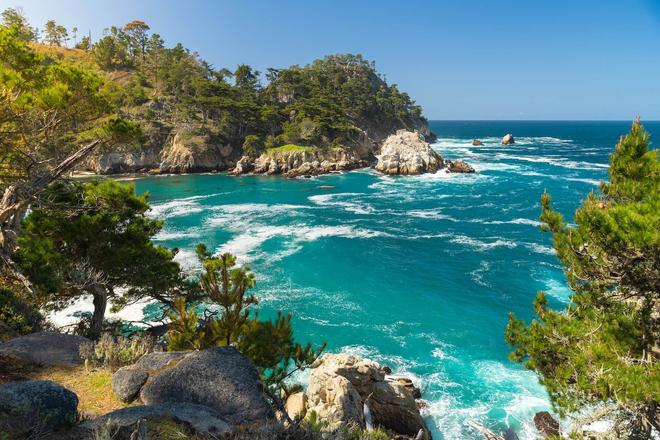
In a short time, writers such as Mary Austin, George Sterling, Upton Sinclair, Sinclair Lewis; painter Xavier Martinez and photographer Arnold Genthe moved from San Francisco to Carmel-by-the-Sea, and Jack London stayed there for a time. Subsequently, the Carmel Art Club was formed, whose members supported each other's artistic activities, held regular meetings on the beaches, and built dwellings among the trees for greater peace and inspiration for artists…
The culmination of these activities was the creation of a unique forest theatre where plays were performed and which can still be visited today. Ironically, this activity led to the slow decline of the Carmel art colony. The town became known as an ideal place to relax, close to the sea and beautiful countryside, attracting more and more people from the upper classes, and this caused land prices and the financial demands of everyday life to rise. Many members of the colony gradually left Carmel because they simply could no longer afford to live there.
Yet even after that, there remained a number of artistic people who continued the trend. In 1927, the Carmel Art Association was founded, collecting mainly paintings by local artists. It is still in operation today, making it the second oldest society of its kind in the entire United States. Even today, you can still meet many painters in Carmel and the surrounding area, watch them at work, or just chat with them. They usually have outlets for their work – there are around 70 galleries of various levels in the city; some locals even say there are as many as a hundred. Prominent among them is the Weston Gallery, which cares for the work of photographer Edward Weston, one of the many famous photographers who lived in Carmel (others include Anselm Adams, famous for his photographs of Yosemite National Park, who lived in Carmel from 1962).
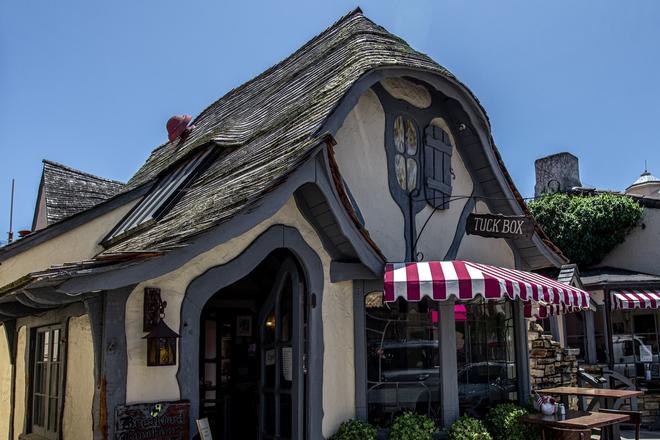
A city hidden in the greenery
This laid the foundations for the special atmosphere of the place that persists to this day. Carmel-by-the-Sea really doesn't have the feel of an ordinary American small town. Today's higher standard of living is evident at a glance as you walk the streets. Restaurants and bars with all kinds of delicacies from all over the world, fashion boutiques, art galleries, but also small shops with handicrafts and flowers, hidden in courtyards and corners... All this can be seen while wandering down the main street of Ocean Avenue and the side streets and narrow alleys.
As the name of the main street suggests, it will eventually bring you to the coast where you can relax on the city beach, jog in the surf or just watch the surfers trying to catch the best wave. But Carmel is remarkable for other reasons, too. Looking from afar, you wouldn't even realize you were looking at a city. All of the development is hidden in the greenery, with only a few buildings overhung by trees. In fact, the height of the buildings here is strictly controlled to avoid disturbing this color. You will also get the same impression in Carmel's residential districts. The houses are hidden behind a dense wall of bushes and trees and often cannot be seen from the road. Moreover, the mature trees let in only part of the sun's rays, creating pleasant shade even on warm summer days.
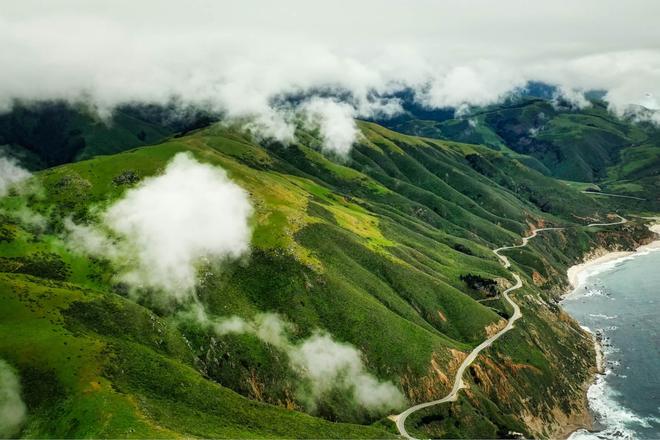
Mission San Carlos Borroméo de Carmelo
When you're tired of wandering the streets or relaxing on the beaches, you can head to a place where you'll be touched by history, ancient by California standards. On the outskirts of Carmel is the local mission San Carlos Borroméo de Carmelo. It is one of a total of 21 missions founded between 1769 and 1823 by Franciscan friars.
The local mission was the second in order, founded in 1770 (only the mission in San Diego is older) and soon became an important point in the whole Monterrey area. It has a privileged position also because it has been preserved in almost its original state. It has, of course, been thoroughly renovated, but the form and layout of the buildings and the interior furnishings have remained essentially unchanged.
Today, visitors can see the church, the monks' outbuildings and several museums that are thematically related to the history of the region or the mission building itself. Those who are not too interested in history and prefer genius loci will not be disappointed. A stroll through the sunny mission cemetery or a sit in the courtyard invites you to quietly contemplate and enjoy the atmosphere, which is occasionally disturbed by a group of children from a church-run private school on the premises. The openness to the public and, of course, the historical value of the site are the main reasons why the people of Carmel-by-the-Sea are so proud of their St. Charles Borromeo Mission.
